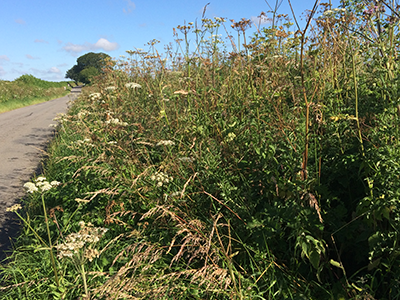Air Pollution and the Natural Environment
The problem of Atmospheric Nitrogen
While our other air quality webpages and the wider available information rightly focuses on public health, we also want to highlight the negative impacts air pollution can have on the natural environment.
Air pollution can negatively affect natural habitats, ecosystems and processes, and plants and animals. Serious environmental impacts of air pollution occur as a result of nitrogen deposition, acid deposition and direct toxic effects of pollutants in the air. Ozone can be toxic to plants and contributes to smog in cities which can harm wildlife and domestic animals.
Over the last two decades, UK emissions of nitrogen oxides have fallen by about 70%
due to measures to control air pollution, although there have only been small decreases in ammonia emissions. Despite these welcome reductions, deposition of both reduced and oxidised nitrogen to the UK has not declined as rapidly because of changes in atmospheric processing (1).
How it happens – Nitrogen Deposition
Nitrogen deposition is the term given when reactive nitrogen pollutants emitted to the atmosphere are transferred to land and water bodies, either as a gas (dry deposition) or in precipitation (wet deposition).
In the UK, the two main forms of atmospheric nitrogen pollutants are nitrogen oxides NOx (which includes Nitrogen Dioxide) and ammonia NH3.
Nitrogen oxides are emitted from the burning of fossil fuels mainly from power stations, factories and transport emissions in particular diesel engines, whereas the main source of ammonia is from agriculture.
What are the impacts?
Nitrogen in air pollution acts as a fertiliser, making conditions too rich for many wild fungi and plants. That's one of the reasons why you're more likely to see mile after mile of cow parsley and nettle which are nitrogen-tolerant species on our rural highways, road verges and field margins. But what you often won't find is large variety of wildflowers that 30 to 40 years ago decorated these same roadside verges. This has negative consequences for animals, including pollinating insects, that depend on wild fungi and plants for food, nutrients and shelter (1).
Increased levels of nutrients in watercourses encourage plant growth, which can lead to problems such as algal blooms which reduce light and oxygen levels. This process, known as eutrophication, affects ecosystems, killing fish and altering plant communities (3).
Nitrogen deposition also damages the growth of lichens, which are very sensitive to air pollution. They are recognised worldwide as useful indicators of air quality (1).
These impacts can be a serious threat to protected habitats and conservation areas (4) and affects us all as biodiversity is vital to our health and wellbeing, our culture and our economy.
What can be done?
Education
- Disseminating these messages and sharing information can help support educating everyone about the impacts of nitrogen on the environment, alongside more familiar environmental issues, such as climate change, water pollution and habitat loss.
- From a farmer's perspective, simple steps – such as covering slurry stores and spreading fertilizer's more efficient - can make a huge difference.
- You could help monitor the impact of nitrogen on your local wildlife and improve our knowledge through citizen science, for example using the Lichen App
 or OPAL Air Survey
or OPAL Air Survey  .
. - Look at our Get involved (doing your bit) webpage to see how your travel and home life choices can make a difference.
Reduce the amount of meat that you eat
- Whilst protein is required as part of a healthy diet, estimates show that levels of animal protein in European diets are on average 70 per cent higher than recommended, a reduction in the amount of meat you eat could potentially reduce ammonia emissions (2).
- Alternatively, a shift in the type of meat consumed could decrease ammonia pollution, for example, a shift from beef and pork to poultry and milk, whose production involves lower nitrogen costs (2). This could also have the added bonus of reducing your carbon footprint.
- By changing the way you eat you may also influence other parts of the food chain e.g. supermarkets or suppliers and help to make a larger difference.
For more information please see the below links:
(1) https://www.plantlife.org.uk/our-work/clean-air-wild-plants-fungi 
(2) https://royalsociety.org/~/media/policy/projects/evidence-synthesis/Ammonia/Ammonia-report.pdf 
